Reptiles are notorious for being expensive and challenging to care for, but they aren’t all that way. Many reptiles are beginner-friendly and won’t break the bank. Some of the cheapest pet reptiles are also the friendliest and easiest to care for.
Below are 12 of the most popular and affordable reptiles that make great pets.
1. Ball Python

“Royal pythons,” aka ball pythons, get their name because of their bold patterns.
©David Kenny/iStock via Getty Images
Ball pythons also go by the name “royal pythons.” Most adults grow 3.3-5 feet long and have dark brown bodies with irregular light brown splotches.
In the wild, these snakes live in West and Central Africa. They make their homes in open grasslands and forests.
Ball pythons are mostly out and about during the day. They also spend lots of time hiding underground in their burrows.
Ball pythons are the most popular pet snakes. They are docile and have impressive, bright patterns. Their patterns are incredibly unique, each as different as a fingerprint.
2. Bearded Dragon
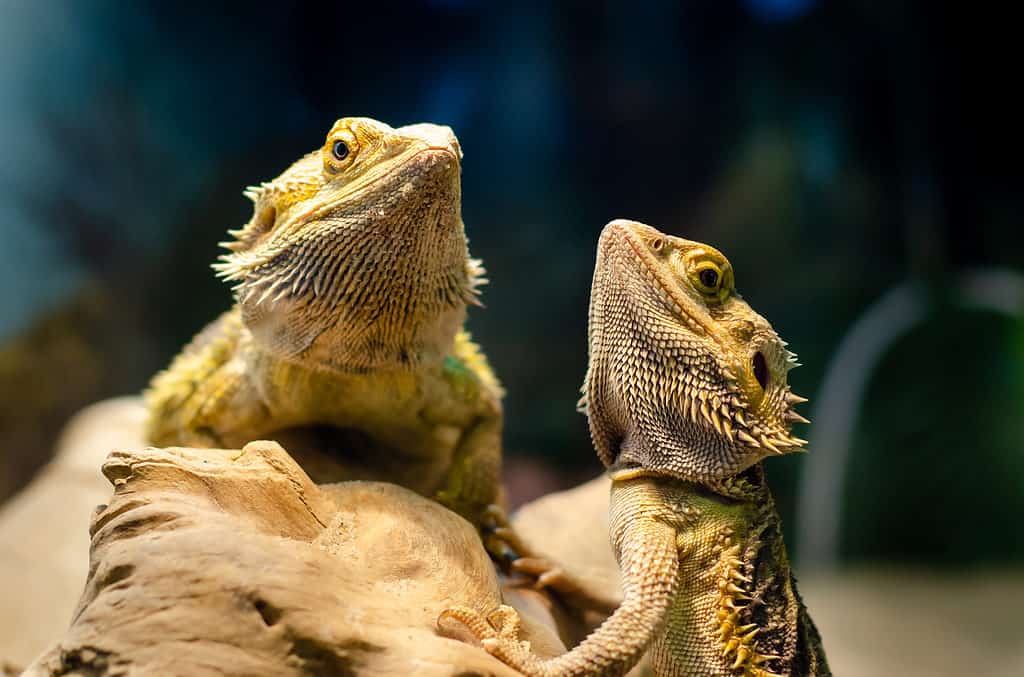
These hardy, easy-going reptiles are great for beginners.
©Lutsenko_Oleksandr/Shutterstock.com
Bearded dragons are one of the most popular pet reptiles. They have curious personalities and enjoy interacting with their caretakers.
These lizards are one of the best species for beginners, as they are easy to care for.
While it’s fun to interact with bearded dragons, only handle them for less than 5 minutes at a time. Longer periods of “gentle handling” (5-15 minutes) increase stress in these reptiles.
Bearded dragons get their name from the expandable pouches on their necks. The pouches resemble beards when they flare them.
3. Blue-Tongued Skink

©Lutsenko_Oleksandr/Shutterstock.com
Blue-tongued skinks get their name from their long, blue tongues.
They display their tongues to defend themselves when they feel threatened. These skinks puff up their bodies to look bigger, hiss, and show their tongues to scare off their enemies.
Blue-tongued skinks are more sensitive to short wavelengths of light. Other (diurnal) lizards (those active during the day) are not as sensitive.
As a result, blue-tongued skinks might see more colors than others.
4. California King Snake
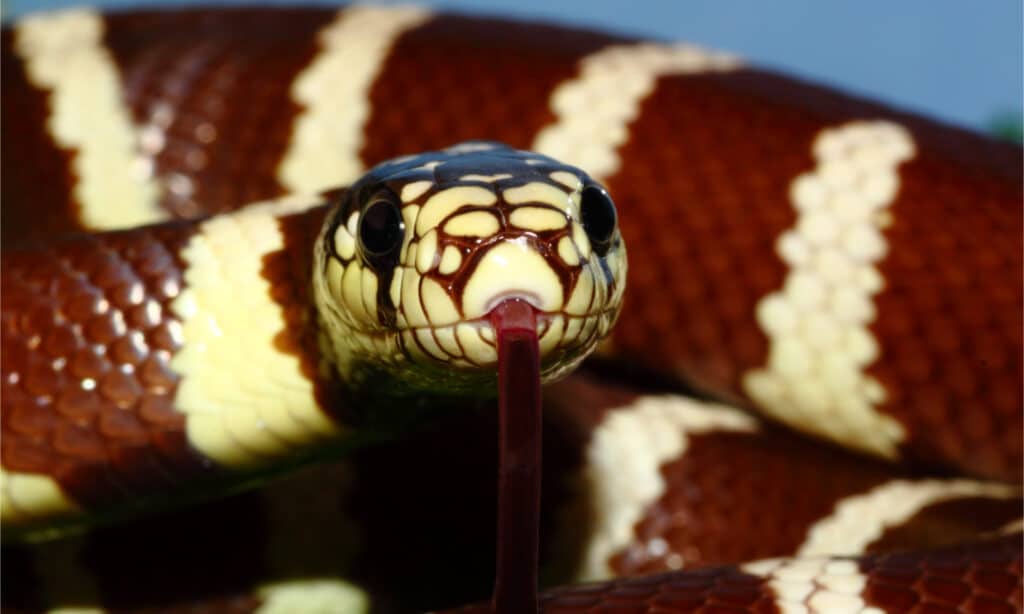
Their bright, contrasting colors make California king snakes highly popular.
©MattiaATH/Shutterstock.com
California king snakes are beautiful animals. They have contrasting light and dark bands down the length of their bodies.
Most California king snakes grow to about 3.5 feet long, though some in Mexico are nearly twice as long.
These snakes are constrictors that squeeze their prey to death before eating.
Fortunately, they are not venomous and are not dangerous to humans. They might give their owner a painful bite if they scare them, but these bites are harmless.
5. Corn Snake
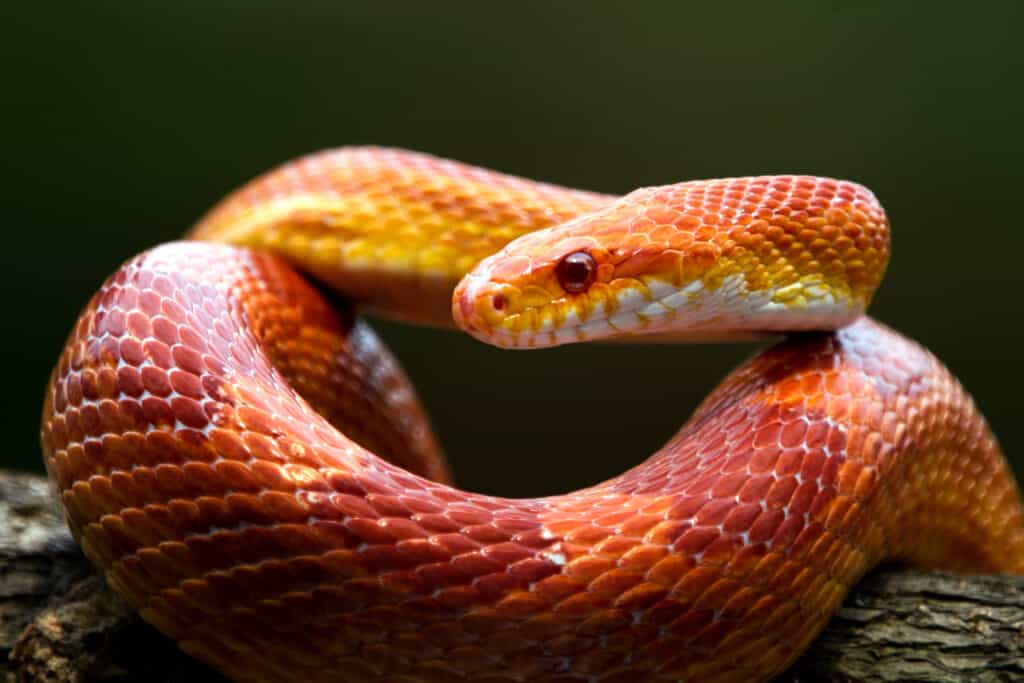
©Kurit afshen/Shutterstock.com
Corn snakes are famous for their colors and come in many morphs.
One of the most popular snakes, breeders have created dozens of corn snake morphs. They are now the most widely bred pet snake.
Corn snakes are nonvenomous and are safe to handle.
They make great beginner pets. They are highly adaptable and known for living in forests, deserts, and urban areas.
Interestingly, corn snakes are great climbers and spend a lot of time in trees.
6. Crested Gecko
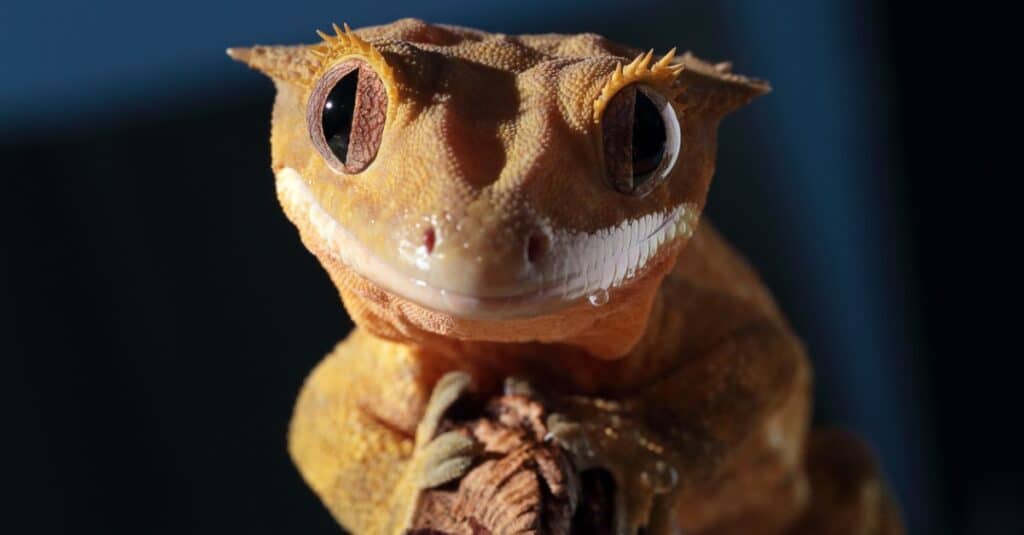
These lizards are also known as “eyelash geckos” because of the spikes that resemble eyelashes.
©iStock.com/MattiaATH
Crested geckos get their name from their calcareous crests. The crests run down each side of the animals’ backs, above the eyes, and on the legs. The crests are beneficial for keeping the dust out of the lizards’ eyes.
Some also call these geckos “eyelash geckos.” The crest that covers their eyes has spines that resemble eyelashes.
The scansors and lamellae on geckos’ digits are adhesive and help them stick to surfaces. Twenty-one kinds of geckos — including the crested gecko — also have adhesive tail pads.
7. Green Anole
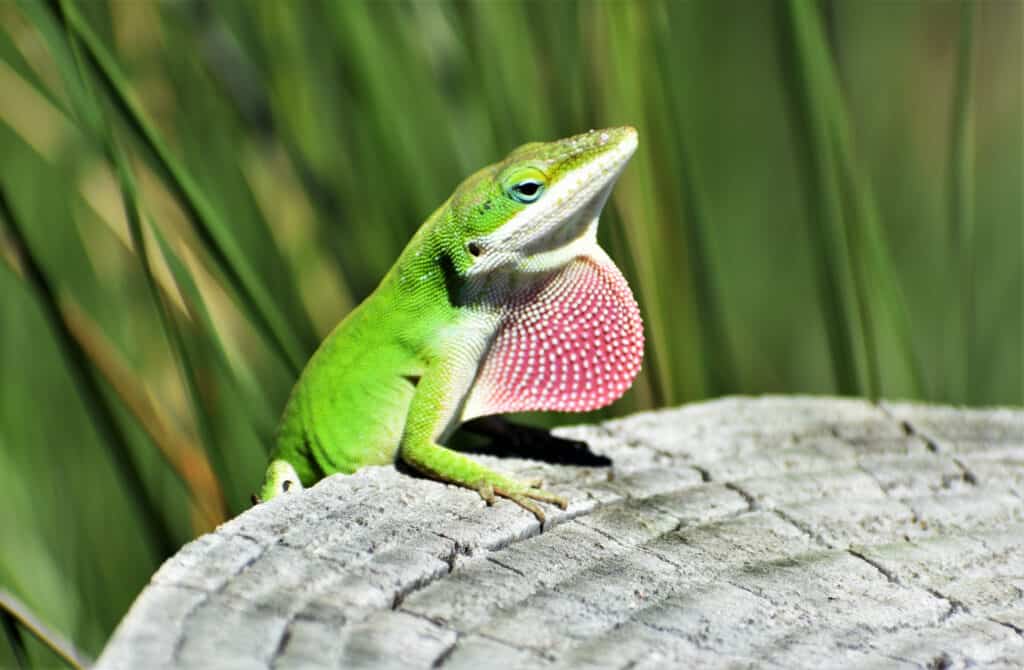
Male green anoles display their dewlaps to attract mates.
©victoria.schell/Shutterstock.com
Small, tropical lizards, green anoles get their name for their bright green color. Not all green anoles are green, though; some are brown, gray, or a combination of all three colors.
Green anoles are infamous for dropping their tails when they feel threatened. They are not a good pet to handle.
After losing them, they begin to regrow their tails rapidly. The experience is still very stressful.
8. Leopard Gecko
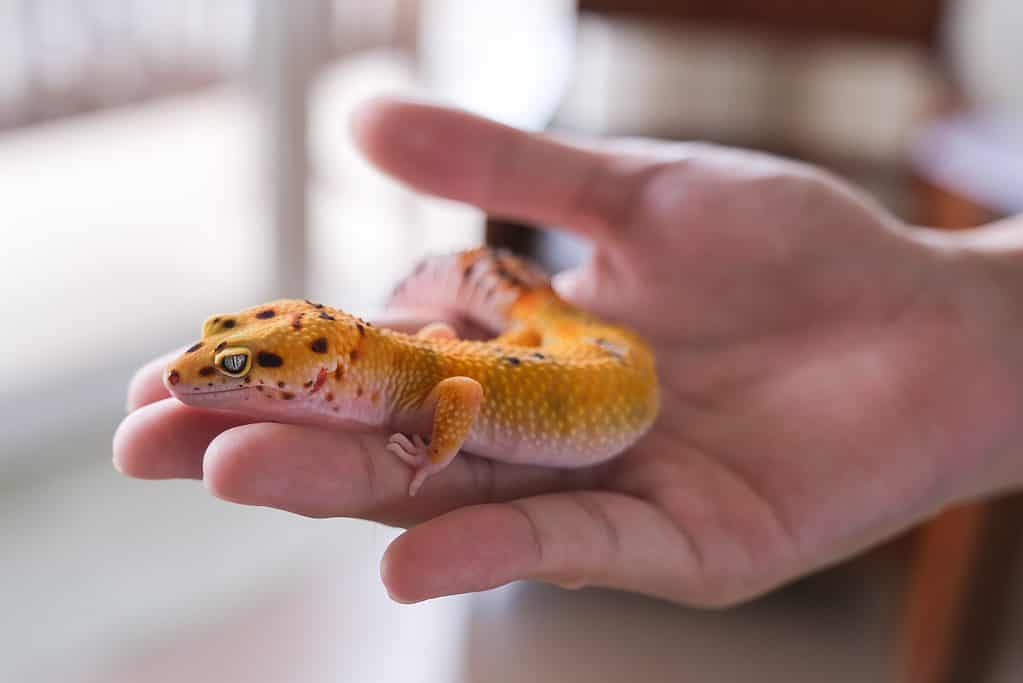
Bright orange bodies and dark spots make these lizards look like leopards.
©Nana Margono/Shutterstock.com
Leopard geckos have light bodies covered in irregular dark spots. The dark markings resemble leopard spots, which is where they got their name.
These lizards are popular in the pet industry; many morphs have emerged as a result. Some of the most popular morphs include “chocolate,” “albino,” “high color,” and “yellow phase.”
Unlike most geckos, leopard geckos have a vertical slit pupil and eyelids that move.
9. Long-Tailed Grass Lizard
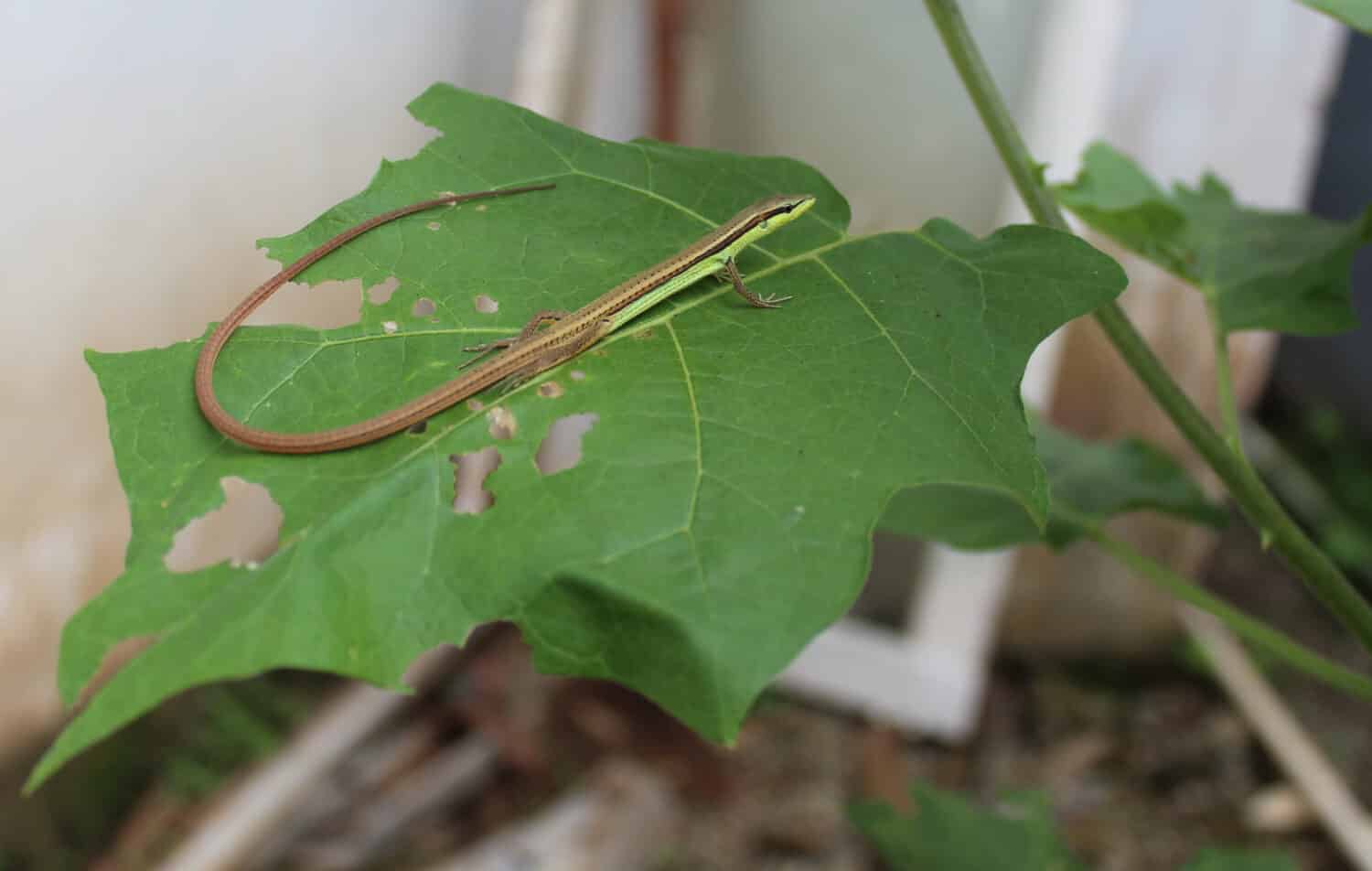
Long-tailed grass lizards’ tails make up most of their bodies.
©Diaz_01/Shutterstock.com
These lizards have exceptionally long, slender tails, which is where they get their name, “long-tailed.” Their tails are nearly four times the length of their bodies.
The lizard’s body and tail are hues of green and brown, making their body resemble a long stick.
Long-tailed grass lizards live at the edges of forests. They make their homes in the grasslands of Southeast Asia, southern Russia, and China.
Their long tails are excellent for balance. They allow the animals to move quickly through the grass.
These lizards are so light and quick that they can move across the tops of the grass blades. The way they move across the grass makes them look like they’re swimming.
10. Rosy Boa
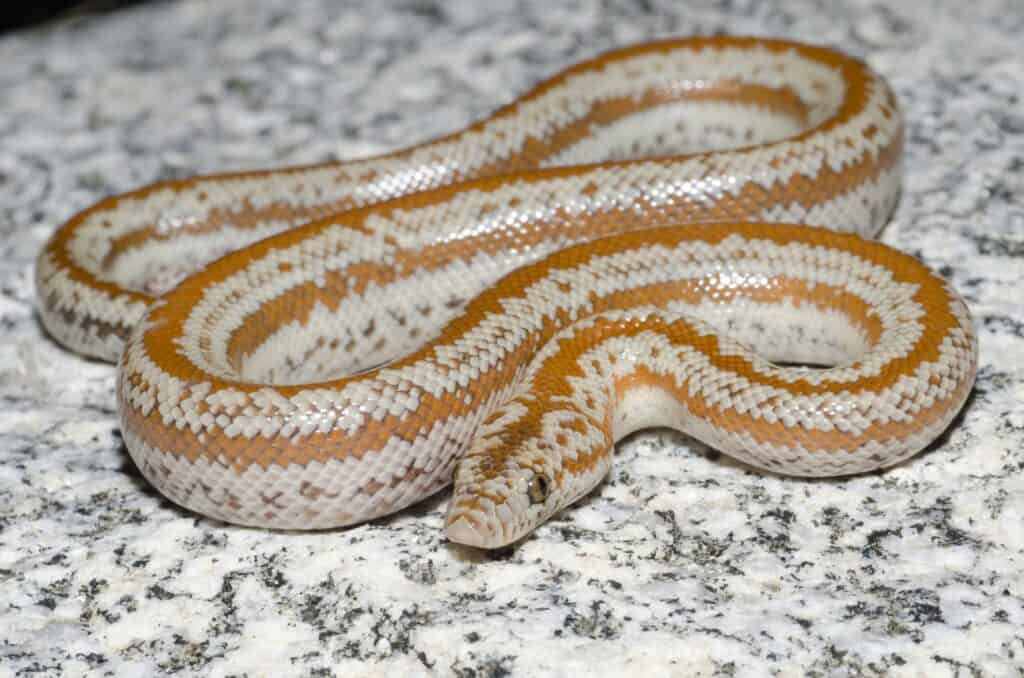
These small snakes have light-colored bodies and beautiful patterns.
©Jason Mintzer/Shutterstock.com
Rosy boas have thick bodies but are one of the smallest animals in the Boidae family. They only grow to about 17-44 inches in length.
Their tapered tails are short and blunt. The tails are also slightly prehensile, making them ideal for movement.
Rosy boas are shy animals, and their activity depends on the weather. During the winter, they tend to be more active during the day. They are more active at night during the hot summer months.
11. Russian Tortoise

These small tortoises can live for a long time, up to 100 years.
©Elena M. Tarasova/Shutterstock.com
Russian tortoises are small to medium in size, growing about 5-10 inches long.
These tortoises are more social than other tortoise species. They spend much time in burrows where it is cooler and will visit each other’s burrows.
While cheap, prospective owners shouldn’t jump to buying a Russian tortoise. They can live 50 to 100 years, meaning they are a big responsibility.
12. Western Hognose Snake
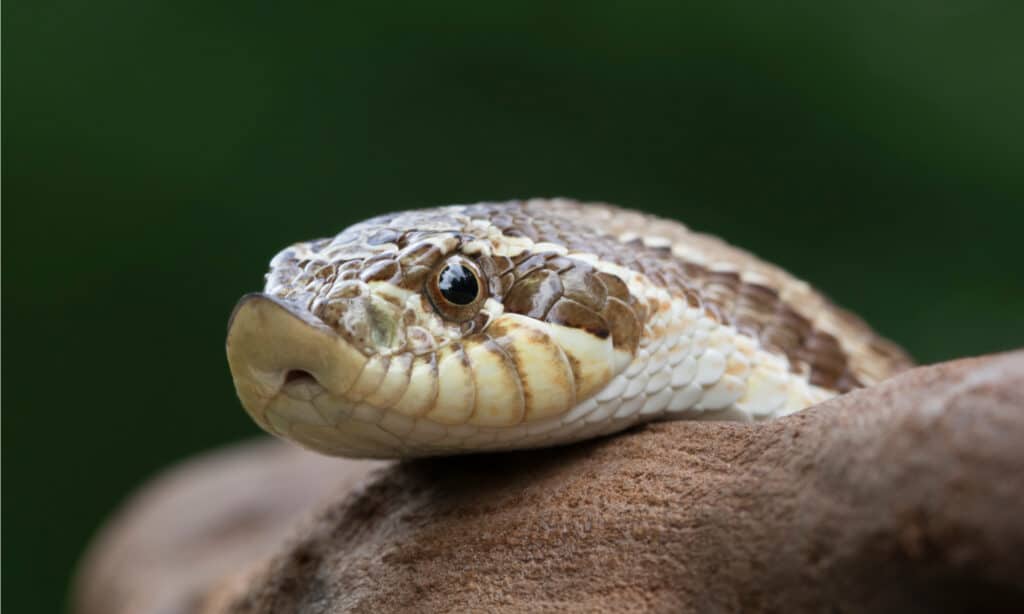
Western Hognose Snakes have large, upturned snouts for digging.
©Mark_Kostich/Shutterstock.com
These pig-like snakes are small animals that only grow to an average of 20 inches long. The base of their body is gray-brown to light green. About 40 dark, olive-green spots cover their backs.
Hognoses are most famous for their large, upturned noses resembling a hog’s nose. They use their noses for digging and burrowing under the ground, where they hide when they are not active.
Summary of the 10 Most Affordable Pet Reptiles
| Rank | Reptile | Scientific Name | Size (Length) | Cost |
|---|---|---|---|---|
| #1 | Ball Python | Python regius | 6 feet | $100-350 |
| #2 | Bearded Dragon | Pogona vitticeps | 20-24 inches | $40-150 |
| #3 | Blue-Tongued Skink | Tiliqua scincoides | 17 inches | $100-300 |
| #4 | California King Snake | Lampropeltis californiae | 3.5 feet | $150-350 |
| #5 | Corn Snake | Pantherophis guttatus | Up to 6 feet | $30-300 |
| #6 | Crested Gecko | Correlophus ciliatus | 6-10 inches | $50-400 |
| #7 | Green Anole | Anolis carolinensis | 1.5-3 inches | $5-10 |
| #8 | Leopard Gecko | Eublepharis macularius | 7-11 inches | $15-100 |
| #9 | Long-Tailed Grass Lizard | Takydromus sexlineatus | 10-12 inches (⅘ of that is their tail) | $10-30 |
| #10 | Rosy Boa | Lichanura trivirgata, Lichanura orcutti | Up to 44 inches | $25-200 |
| #11 | Russian Tortoise | Agrionemys horsfieldii | 5-10 inches | $75-400 |
| #12 | Western Hognose Snake | Heteredon nasicus | 2-3 feet | $100-350 |
FAQs
What is the friendliest reptile?
Leopard geckos are one of the friendliest lizards that you can keep as a pet. They are docile, calm, and simple to care for and handle.
What is a cuddly reptile?
Bearded dragons are famous for their friendly and cuddly personalities. They are one of the few reptiles that enjoy handling and cuddling.
Bearded dragons become very affectionate with their caretakers. Many enjoy climbing on their humans and hanging out on their shoulders.
The photo featured at the top of this post is © Claudia Nass/iStock via Getty Images
Thank you for reading! Have some feedback for us? Contact the AZ Animals editorial team.







